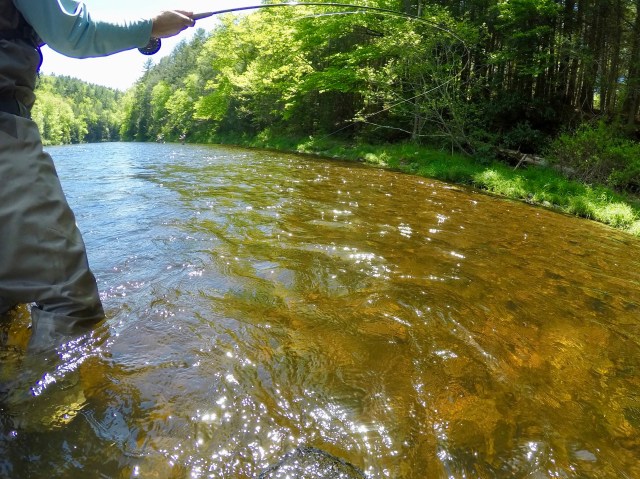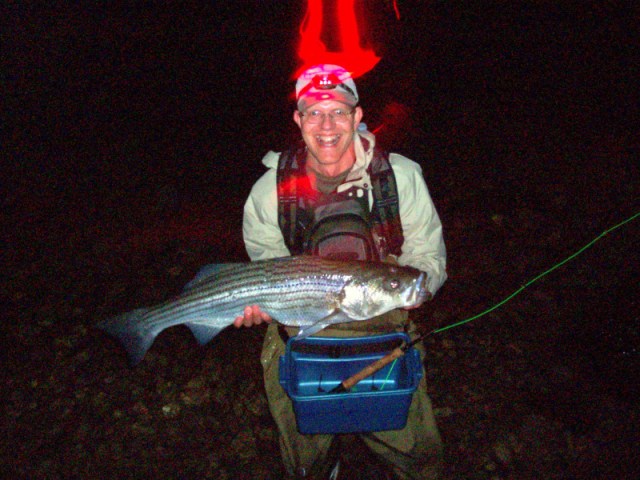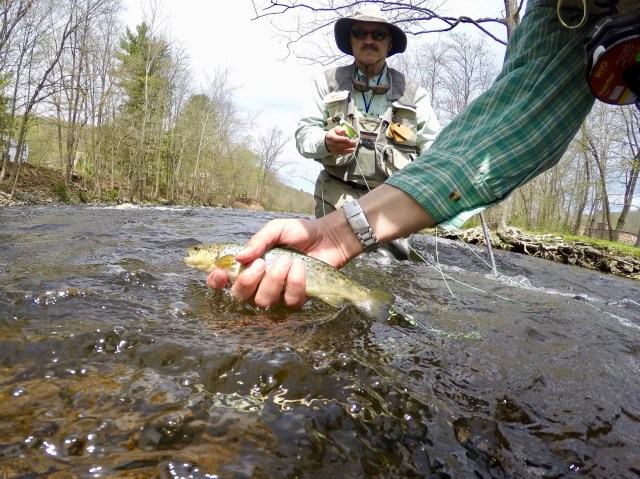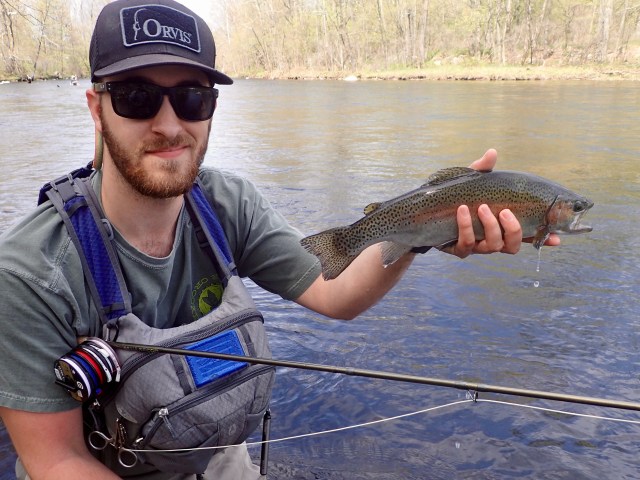Many years ago I adapted Ken Abrames’ R.L.S. Herr Blue bucktail into a large nine-feather flatwing. I was pleased with the result, and that fly produced many large bass for me. But the recent acquisition of a ginger saddle brought out the tinkerer in me. And since I never did a three feather flatwing-bucktail version of the Herr Blue, I went to work.
If you’re unfamiliar with the concept, a flatwing/bucktail hybrid combines the seductive motion and swimming action of a flatwing (using three contrasting saddles) and the color-blending deliciousness and adding-the-illusion-of-mass properties of bucktail. I originally started tying these not only as a way to conserve precious flatwing saddles, but also to use bucktail in place of saddle colors I did not have. The template is Razzle Dazzle, with all strands of flash extending at least 3/4″ beyond the longest feather. (See the Rock Island and Crazy Menhaden three-feather flatwings.) Bonus: they’re easy to cast for their size, and they swim beautifully on the greased line swing.
Obviously this fly is intended to imitate a river herring or alewife; it could also easily pass for other larger baitfish like menhaden. I tied two, one 8″ and the other 10″. So without further ado, I present the Herr Blue three-feather flawing. DIA. (Danke In Advance.)
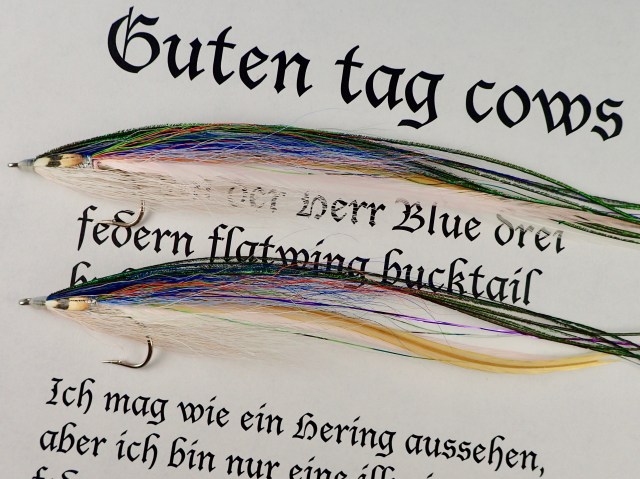
Hook: Eagle Claw 253 3/0
Thread: White 6/0
Platform: White bucktail, 30 hairs
Tail: First, a white saddle; second, 2 strands silver flash; third, a pink saddle; fourth, a ginger saddle; fifth, 2 strands light green flash; sixth, 15 hairs light blue and 15 hairs pink bucktail, mixed; seventh, 10 hairs light blue and 10 hairs violet bucktail, mixed; eighth, 2 strands purple flash; ninth, 10 hairs orange and 10 hairs emerald green bucktail, mixed.
Body: Silver braid
Collar: White and ginger bucktail, mixed about 5:1 respectively
Wing: 15 hairs smoky gray bucktail and 30 hairs dark blue bucktail, mixed
Topping: 7-8 stands peacock herl
Eyes: Jungle cock
~
A closer look at the blend of nine different colors of bucktail.




